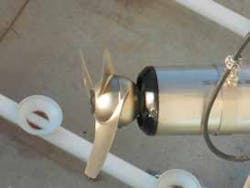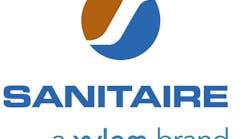The City of Olathe is located just outside of Kansas City and is home to a growing population of 126,000, making Olathe the fifth most populous city in Kansas. Residents depend on the local Cedar Creek Wastewater Treatment Plant (WWTP) to meet their water demand.
Background
Several years ago, the Environmental Protection Agency (EPA) began an initiative in the Mississippi River basin to control excess amounts of nitrogen and phosphorus pollution entering the Gulf of Mexico through watersheds and point sources such as municipal wastewater treatment plants.
A booming agriculture industry using copious amounts of pesticides was one of the primary contributors of excess nutrients being introduced into lakes, rivers, and even ground water resources. States located in the heart of farmland were under pressure to restore their surface water quality. Kansas, a leader in wheat, grain, and beef production, was under scrutiny due to the state’s 244 streams and 187 reservoirs with nutrient related impairments.
The City of Olathe, Kansas, along with many other cities in the state, decided to take a proactive approach to decrease nutrient levels by upgrading their treatment facilities.
Cedar Creek Wastewater Treatment Plant welcomed the opportunity to revamp their existing facility to reduce nutrient levels in their effluent stream.
Built in 1984, the facility had already undergone several expansions to meet increasing water demand and was due for another expansion.
Solution
In June 2010, the city broke ground on the Cedar Creek WWTP expansion, increasing the plant’s capacity by 1.5 MGD to 5.25 MGD, which would provide Biological Nutrient Removal (BNR). Several Xylem technologies were selected for the innovative treatment process including Sanitaire fine bubble membrane disc aeration and coarse bubble wide band aeration; Flygt submersible mixers; PP pumps and submersible pumps; and YSI instrumentation.
The BNR plant design incorporated the Sanitaire fine bubble aeration system and Flygt submersible mixers to maximize the introduction of dissolved oxygen into the wastewater. By combining aeration and mixing technologies, the oxygen uptake/demand was tightly controlled and able to drive the biological reaction towards nutrient removal.
The plant also added a new five-stage biological process within the BNR plant. The multi-stage process uses nitrification/denitrification to reduce nitrogen compounds and the biological uptake process to reduce phosphorus. Sanitaire’s coarse bubble diffused aeration system was selected to satisfy the mixing requirements in the last zone of the BNR trains while maintaining a dissolved oxygen tension.
At the end of the BNR treatment train, Flygt PP pumps are used to re-circulate a percentage of the forward flow back to the in-line fermenter for biological phosphorus uptake. Throughout the entire BNR treatment process, WTW Instrumentation accurately measures the oxygen levels.
With the first robust treatment system for nitrogen and phosphorous removal in the country, Cedar Creek WWTP is now meeting the most stringent EPA effluent requirements.
Results
Expansions at Cedar Creek WWTP have been a huge success and worked to optimize the process and operational performance at the facility. The BNR multi-step treatment process achieved lower than expected nitrogen and phosphorus levels. Additionally, the plant is experiencing up to 50 percent energy savings from implementing
Sanitaire’s fine bubble diffused aeration system compared to the previous aeration system technology. Continuous monitoring and controlling of the oxygen levels has also contributed to operation and maintenance savings.
Plant operators are happy with the performance. Joe Foster, Olathe Wastewater superintendent stated, “The design of the expansion incorporates innovative technologies and serves the needs of Olathe residents now and into the future.”
Editor's Note: Scranton Gillette Communications and the SGC Water Group are not liable for the accuracy, efficacy and validity of the claims made in this piece. The views expressed in this content do not reflect the position of the editorial teams of Water & Wastes Digest, Water Quality Products and Storm Water Solutions.



